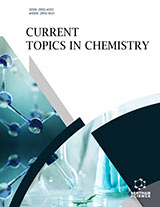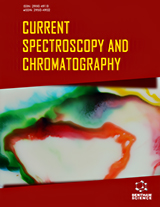Abstract
A new solid-phase extraction method was developed for trace analysis of cobalt on Duolite XAD-761 resin by using flame atomic absorption spectrometry (FAAS). The optimum experimental conditions for the quantitative sorption of Co(II)-PAR (cobalt chelates with 4-(2-Pyridylazo) resorcinol), pH, effect of sample flow rate, concentration of eluent, sorption capacity of resin and the effect of diverse ions on the preconcentration of analytes have been investigated. The optimum pH values for quantitative sorption of Co (II)-PAR were between 5 and 7.5. Eluted process was performed by 4 mL ethanol. The sorption capacity of resin was determined to be 8.6 mg g–1 for cobalt with a preconcentration factor of 150. In optimized conditions, the detection limit for cobalt ions was found to be 0.36 μg L– 1. The accuracy of the proposed procedure was checked by using NIST 1573 a tomato leave as a standard reference material. The achieved results were in good agreement with certified values. The proposed method was applied for the determination of cobalt in different water samples, such as city line, geothermal, river and lake.
Keywords: Solid phase extraction, Duolite XAD-761, PAR, Cobalt, Metal, Preconcentration, FAAS
Current Analytical Chemistry
Title: Solid Phase Extraction Method for the Determination of Cobalt in Water Samples on Duolite XAD-761 Resin Using 4-(2-Pyridylazo) Resorcinol by FAAS
Volume: 6 Issue: 2
Author(s): Harun Ciftci
Affiliation:
Keywords: Solid phase extraction, Duolite XAD-761, PAR, Cobalt, Metal, Preconcentration, FAAS
Abstract: A new solid-phase extraction method was developed for trace analysis of cobalt on Duolite XAD-761 resin by using flame atomic absorption spectrometry (FAAS). The optimum experimental conditions for the quantitative sorption of Co(II)-PAR (cobalt chelates with 4-(2-Pyridylazo) resorcinol), pH, effect of sample flow rate, concentration of eluent, sorption capacity of resin and the effect of diverse ions on the preconcentration of analytes have been investigated. The optimum pH values for quantitative sorption of Co (II)-PAR were between 5 and 7.5. Eluted process was performed by 4 mL ethanol. The sorption capacity of resin was determined to be 8.6 mg g–1 for cobalt with a preconcentration factor of 150. In optimized conditions, the detection limit for cobalt ions was found to be 0.36 μg L– 1. The accuracy of the proposed procedure was checked by using NIST 1573 a tomato leave as a standard reference material. The achieved results were in good agreement with certified values. The proposed method was applied for the determination of cobalt in different water samples, such as city line, geothermal, river and lake.
Export Options
About this article
Cite this article as:
Ciftci Harun, Solid Phase Extraction Method for the Determination of Cobalt in Water Samples on Duolite XAD-761 Resin Using 4-(2-Pyridylazo) Resorcinol by FAAS, Current Analytical Chemistry 2010; 6 (2) . https://dx.doi.org/10.2174/157341110790945472
| DOI https://dx.doi.org/10.2174/157341110790945472 |
Print ISSN 1573-4110 |
| Publisher Name Bentham Science Publisher |
Online ISSN 1875-6727 |
 5
5
- Author Guidelines
- Bentham Author Support Services (BASS)
- Graphical Abstracts
- Fabricating and Stating False Information
- Research Misconduct
- Post Publication Discussions and Corrections
- Publishing Ethics and Rectitude
- Increase Visibility of Your Article
- Archiving Policies
- Peer Review Workflow
- Order Your Article Before Print
- Promote Your Article
- Manuscript Transfer Facility
- Editorial Policies
- Allegations from Whistleblowers
- Announcements
Related Articles
-
Functional Consequences of Immune Cell Adhesion to Endothelial Cells
Current Pharmaceutical Design Editorial from Guest Editor [Hot topic: Novel Inflammatory Biomarkers in Diseases (Guest Editor: Yu Chen)]
Inflammation & Allergy - Drug Targets (Discontinued) Selection of Potential Pharmacological Targets in ALS Based on Whole- Genome Expression Profiling
Current Medicinal Chemistry The Effects of Erythropoietin on the Respiratory Function: Measurements of Respiratory Mechanics in the Rat
Current Respiratory Medicine Reviews Phosphodiesterase 5 Inhibitors - Drug Design and Differentiation Based on Selectivity, Pharmacokinetic and Efficacy Profiles
Current Pharmaceutical Design Pharmacological Screening of Lantana camara for its Antiallergic Activity in Rodents
Clinical Anti-Inflammatory & Anti-Allergy Drugs (Discontinued) Regulatory Role of the α7nAChR in Cancer
Current Drug Targets Regional Distribution and Kinetics of Inhaled Pharmaceuticals
Current Pharmaceutical Design Why are People with “Poor Lung Function” At Increased Atherothrombotic Risk?A Critical Review with Potential Therapeutic Indications
Current Vascular Pharmacology Anti-inflammatory Potential of Alkaloids as a Promising Therapeutic Modality
Letters in Drug Design & Discovery Therapeutic Potential of Voltage Gated Calcium Channels
Mini-Reviews in Medicinal Chemistry Molecular Targets of FTY720 (Fingolimod)
Current Molecular Medicine The Two Faces of Interleukin-17A in Atherosclerosis
Current Drug Targets Self-Assembled Peptide Nanoarchitectures: Applications and Future Aspects
Current Topics in Medicinal Chemistry Pharmacogenomics in Aspirin Intolerance
Current Drug Metabolism Dietary Salt and Disease Prevention: A Global Perspective
Current Medicinal Chemistry - Immunology, Endocrine & Metabolic Agents Efalizumab
Anti-Inflammatory & Anti-Allergy Agents in Medicinal Chemistry Patent Annotations
Recent Patents on Anti-Infective Drug Discovery Biomarkers in Pediatric Lung Diseases Including Cystic Fibrosis
Current Respiratory Medicine Reviews Detailed Molecular Understanding of Agonistic and Antagonistic Vitamin D Receptor Ligands
Current Topics in Medicinal Chemistry


























